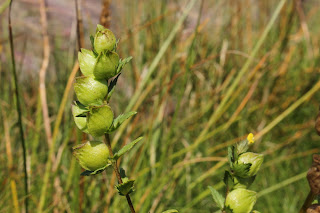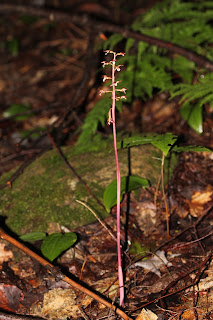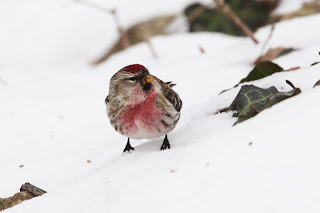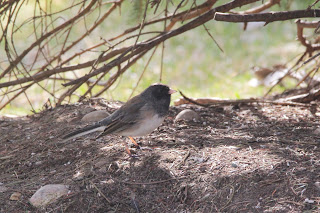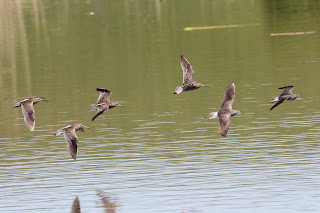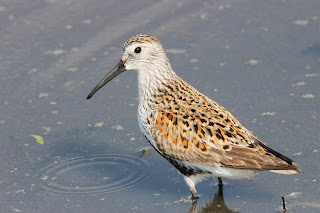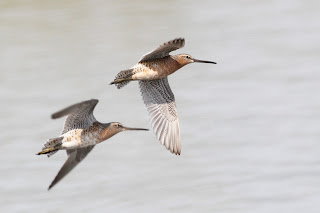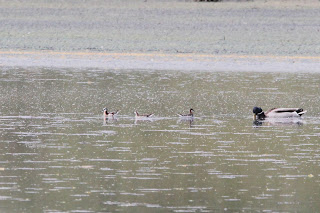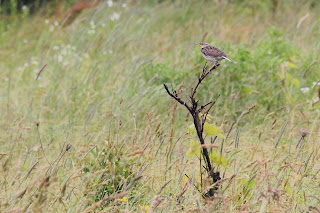Plants are a very diverse group of organisms, so as one could expect, there are a number of them that do "weird" things. There is no shortage of fascinating techniques that plants employ in order to survive in their environment. This is part 3 of my little series "Plants That Do Weird Things". Check out part 1, where we look at myco-heterotrophy, and part two on haustorial parasites if you haven't already, as they will explain certain concepts that I refer to here.
In this post, I want to look at a group of plants that may be much more familiar to even the casual observer: carnivorous plants. Carnivorous plants are a plant which are able to catch, kill, and digest prey, and then use the nutrients from said prey to grow.
Recall in part 2, I mention that we were done looking at the heterotrophic plants. You may be wondering, since a heterotrophic plant is one that feeds off other organisms, then is that statement still true? Yes it is. Despite having the ability to intake nutrients from digesting other organisms, carnivorous plants would be considered autotrophic, as they are perfectly able to grow and survive by creating their own energy through photosynthesis. That being said, the extra nutrients from prey items helps the plant to not just survive, but thrive, often growing larger and producing more seeds.
In order to capture their prey, carnivorous plants employ one (or in some cases, several) of five trap mechanisms: flypaper traps, pitfall traps, bladder traps, snap traps, and "lobster-pot" traps. All of these traps are derived from highly specialised leaves. Carnivorous plants in Ontario utilize one of the first three methods.
Plants with flypaper traps simply use a sticky glue-like substance, known as mucilage. The leaves of these plants have many glands that secrete mucilage, and these glands may be short or long. Once a prey item (almost always an insect) is trapped, then these plants respond by actually growing or moving their parts in response, which not only helps ensnare it further, but also digestion. This is called thigmotropism, which simply put, is directional growth in response to touch. To digest their prey, these glands will release a series of enzymes, which break down the insect, and this is true regardless of the trap type.
In Ontario, there are two genera from two families that would be classified as using flypaper traps. Perhaps the most well known are the sundews (Drosera, Droseraceae). Sundews have many long "tentacles", which are tipped in mucilage. Many species also have short glands, which are sessile (attached at the base without a stalk). When an insect is trapped, these tentacles are mobile, and move into the centre of the leaf so the insect is in contact with as many of these tentacles as possible.
There are four species known from Ontario, as well as a couple of hybrids. Round-leaved Sundew (D. rotundifolia) is likely the best known. Spoon-leaf Sundew (D. intermedia) is another common species that tends in inhabit a slightly different habitat than Round-leaved.
 |
| Round-leaved Sundew |
Despite having seen all of the sundew species in Ontario, I have never made a point of actually taking good pictures of the mucilage glands. A reoccurring issue in this project is finding I don't have adequate photos for quite a few of the things I want to illustrate—sounds like something to tackle this year! In this cropped image of the above picture, you can see a couple of prey items (insects), as well how the tentacles have moved to contact these unlucky critters.
The other genus in Ontario with flypaper traps is Pinguicula, the butterworts (Lentibulariaceae). This is a bit more of an inconspicuous genus, and not one I have personally seen in situ (a bit hard to believe, I know!). Much like the sundew, this plant has mucilage-secreting glands. However, unlike the sundew, these glands are very short and close to the surface of the leaf, so there are no obvious tentacles. When an insect is captured, thigmotrophic growth occurs, and the leaf may curl over, or form a shallow "pit" for digestion to occur in.
Two species occur in Ontario. Common Butterwort (P. vulgaris) is more widespread than Hairy Butterwort (P. villosa). Common Butterwort is portrayed below.
 |
| From Wikimedia |
 |
| From Wikimedia |
The second type of trap which occurs in Ontario genera is the pitfall trap. There is but one species in the province that uses this method, the Purple Pitcher Plant (Sarracenia purpurea, Sarraceniaceae). As one can imagine, the pitfall works when a prey item falls into the fluid-filled "pitcher", where it is digested. In the case of pitcher plants, although newer plants secrete and use enzymes, as the plant ages, it tends to utilize the bacterial community and microorganisms (mutualistic species) that live within the pitcher to break down the prey into a form that the plant can absorb nutrients from. In order to lure the prey to enter the trap, a series of methods may be employed, including use of scent and colour. On the inside of the pitcher, there is often a number of red venations, and there is evidence to show the bolder these are, the more prey items that are attracted. From there, it is gravity that does the rest of the work!
On the inside of the lip, there are downward facing hairs (yet another thing I wish I had a better photo of!) These act to stop insects from being able to crawl back up and out of the pitcher.
 |
| You can see the hairs in this image |
And its not just insects that pitcher plants consume! A few years ago in Algonquin Park it was discovered that pitcher plants around Bat Lake (a well studied area of wildlife research) were catching recently metamorphosed Spotted Salamanders as they emerged from their breeding pools. These prey items are of course rather large, but there is some evidence that the plants are at least partially digesting them. I haven't seen this bog in person, but from what I have heard, many of the pitcher plants are larger than average, likely from the extra nutrients they are receiving. This story was all over the news, and you can read a little more about it and see some pictures here.
 |
| Lucky for this little guy, no Sarracenia nearby... |
The last kind of trap found in Ontario are the bladder traps. There is only one genus in the world with this design, Utricularia, the bladderworts. These are in the same family as the butterworts, Lentibulariaceae. Nine species are found in Ontario, and they range from being aquatic to nearly terrestrial.
 |
| Horned Bladderwort (U. cornuta) |
 |
| Northeastern Bladderwort (U. resupinata) |
The bladder traps are typically submerged, at least in most of our species. To put it in the simplest terms, these bladder traps work as a vacuum. Through osmosis (the diffusion of water, or flow of water from an area of high concentration to low concentration, across a membrane), the bladder traps are "primed" when water is pumped out of the bladder. The walls of the bladder are sucked inwards with the negative pressure created from this. The traps are triggered when a prey item (which are very small aquatic invertebrates) touches a "trigger hair" near the entrance or door of the trap, which then breaks the seal, and water flows back into the bladder, and with it the prey item.
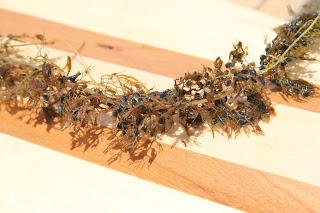 |
| "Bladders" of Common Bladderwort (U. macrorhiza) |
Much like the pitcher plant, a community of microorganisms may in part help the bladderwort break down and digest its prey.
The other two trap mechanisms, snap traps and "lobster-pot" traps, do not occur in Ontario, but are still worth a mention. Only two plants in the world use snap traps, one of which is the poster child for carnivorous plants—the Venus Flytrap (Dionaea muscipula), which is endemic to the southeastern United States, found in wetlands in North and South Carolina, and are introduced to Florida. This plant is related to the sundews, both being in family Droseraceae. The "snap trap" likely needs very little explanation. There are a series of trigger hairs on the specialised leaf, which when triggered, causes them to shut close around the prey item. In order to avoid closing unnecessarily, such as if a raindrop were to hit a trigger hair, the Venus Flytrap will only close if there are two or more touch stimuli a certain length of time apart.
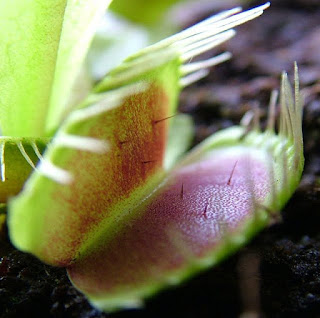 |
| From Wikimedia |
"Lobster-pot" traps are found in a tropical group of plants, the corkscrew plants (Genlisea, Lentibulariaceae). This trap works much like a lobster pot or a minnow trap. It is easy to get in, but part to get out due to downward facing hairs, which force prey deeper into the trap.
You may have noticed that Lentibulariaceae was mentioned three times. Quite neat that within one family, which only include the three genera detailed here, all employ different trap styles!
On a similar note, if we take a step back and look at how these plants are all related to one another, we would likely be quite surprised. You might assume that since these are all carnivores they would be closely related, as we saw with several of the heterotrophs. However, each of the three families mentioned here, Droseraceae, Lentibulariaceae, and Sarraceniaceae all belong to different orders, Caryophyllales, Lamiales, and Ericales respectively. Because of this, carnivorous plants are an excellent example of convergent evolution, which is when distantly related organisms independently evolve similar traits, in this case carnivory, to adapt to similar situations.
But, why carnivory? We have already established that carnivorous plants are autotrophs—they are able to photosynthesise their own energy. Why would a plant that can produce its own food adapt to be able to digest prey items? If you were to stand over and observe a carnivorous plant in its natural habitat, the answer would likely lie directly beneath your feet. For many of our carnivorous plants, especially in the Ontario context, they live in very nutrient poor habitats. Take things like the sundews and pitcher plants for examples, which often grow amongst Sphagnum moss in fens and bogs. Sphagnum moss actually lowers the pH of the soil, making it more acidic. Acidic soil tends to be quite nutrient poor. Since there is a lack of nutrients, in particular nitrogen, then these plants had to look elsewhere, and that was to carnivory. By being able to get energy from an additional source, these plants have that much more of an edge in this harsh environment.
Carnivory is not without a cost, however. By developing these specialised leaves, such as in the sundews and pitchers, the plant will sacrifice some of its photosynthetic ability. A pitcher plant with a pitcher that is roughly vertically inclined (so that it can catch prey) is not photosynthesizing to the same extent that a leaf that is broad and flat, facing the sun, would. Is it worth it? Evolutionarily speaking, it must for for the plant if it continues engage in this behaviour. That being said, a study done on pitcher plants found that each pitcher only has a prey capture efficiency rate of 0.83% - 2.1%, depending on how you wish to calculate it. This is quite low, but an insect once every couple of weeks must be better than trying to live in acidic soil on just your own photosynthetic processes alone!
Carnivorous plants are certainly some of the oddest members of the plant family, employing a number of different methods of capturing and digesting their prey, as well as being able to survive in some the harshest conditions a plant can live in. Carnivores have a fascinating evolutionary history (which I largely didn't touch on here!), and have long been of interest to naturalists. Even Charles Darwin, considered by many to be the father of evolution (perhaps contested by Wallace), had a strong attraction to these plants, writing in 1860, "I care more about Drosera than the origin of all species in the world".
While I believe this will conclude (unless I dig up something else) the look at plants that get their nutrients in unique ways, whether through heterotrophy or carnivory, there are still plenty of special things that plants do I wish to cover! Plants do weird things, and I want to talk about them.










